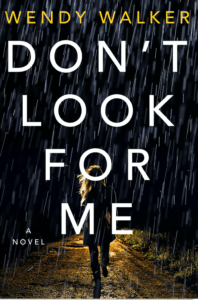When it comes to writing a psychological thriller, choosing the narration structure can be one of the most challenging steps along the way. Unlike other mystery and suspense genres based on unfolding action or the dropping of clues chapter by chapter, the psychological thriller often uses misdirection to create those spectacular twists that make readers gasp.
Misdirection comes in many different forms and authors use different mechanisms to create them. Split time frames, unreliable narrators, dreams, fantasies, characters with multiple personalities – the list goes on! And, indeed, I suspect new mechanisms will continue to appear, surprising and delighting readers who love this genre.
Once a misdirection mechanism is chosen as the basis of the plot, the narration structure will become essential. Readers like to be surprised, but in a way that enables them to look back and see which of their own misperceptions and assumptions led them down the wrong path, and not through the use of a trick, like a protagonist’s “evil twin” popping up in the final chapter. Writers need to consider how to lead a reader down that wrong path in a way that feels fair but also exhilarating.
Split Time Frame Narrations
Using multiple narrators who appear to be different characters, when, in fact, two (or more) are the same character at different times in his or her life, can produce a drastic plot reveal when the reader finally learns they are one and the same. To pull this off, however, the character will have to have different names in the two narrations (which can skirt pretty close to the “evil twin” dilemma), or the narrations can be written in different points of view – one in first person and one in third person. The first person narration then simply never reveals the character’s name.
Another way to use the split time frame to create a twist is to have one narrator throughout tell different parts of the story, while allowing the reader to assume the story is being told sequentially. Using this natural assumption about linear storytelling can be used to cleverly set up the reader for the twist when it is finally revealed that certain parts of the story happened before another part.
Unreliable Narrators
When it comes to an unreliable narrator who is mentally unstable in some way – delusional, psychotic, under the influence, or otherwise unaware of reality, the twist relies on concealing the extent of this flaw until you are ready to make your move. Typically, a slow reveal will enable readers to have an initial surprise, and then begin to look for clues about what really happened, despite what the narrator is telling them. Using a first person point of view is helpful with this technique. The narrator can “lie” directly to the reader without the author being held accountable.
Unreliable narrators can also misdirect readers by omitting facts about the story as it is being told. They are not lying to the reader, just choosing what facts to reveal, and when to reveal them. The reader suspects there are missing pieces and then must try to use the psychological elements of the narrator to guess which pieces are being omitted and why.
Whatever mechanism gives your plot that special twist, be skillful and fair to your readers. Avoid “evil twins” and surprises they can’t possibly see coming. Choose a point of view that makes the character unreliable, and not you as the author. And utilize the natural assumptions readers make to lead them down the wrong path – then bring it on!
But there’s one more key to successfully structuring a psychological thriller.
Don’t Forget the Emotion
As the author of psychological thrillers, I’m always on the lookout for that first hook and that final twist. Ours is a genre is defined by the use of jaw dropping moments that make readers gasp. But creating those moments can often lead to the use of mechanisms that strip the emotion from the story. Here is why – and also what you can do about it.
The mechanisms authors use to create a stunning twist typically fall into two categories. The first is misdirection – using the natural assumptions of readers to lead them down the wrong path. Split time-frames, for example, where a story employs multiple narrations without referencing sequence, is one of the most successful tools. The author can create two narrators who appear to be different characters when they are actually one and the same. The character’s story is just being told at different points in time. Some books separate them by decades, others by years or even months. To do this, however, the author has to be careful to keep the character at a safe distance, even using different names. It also limits the amount of backstory that can be told, as that, too, will begin to reveal similarities that could enable the reader to catch on.
So what can be done?
Give your character habits that are easily identified with a personality trait.
Does she wear sneakers or high heels? Does he drink expensive scotch or cheap beer? Being able to relate a character to real people readers have known in their lives will help create an instant bond.
Give your characters physical traits.
Enabling your readers to visualize the character can also help create an emotional connection. If using the split time-frame mechanism, you can limit the description to one of the character’s narrations.
Add backstory
But without giving your twist away. If you are using a split time-frame to write the same character, pick one and give the readers some powerful ammunition.
Lean into trauma
Add internal thoughts and emotional moments that show the character’s vulnerability. If you are using an unreliable narrator, show the reader what has caused the psychosis or substance abuse or other situation that has made the character unstable. There should be enough backstory to create, at the very least, an understanding of that character. And from understanding comes empathy.
Use love
If your character loves anyone in his or her life, let that come through loud and clear. A person who is capable of love is also lovable.
Our genre has taken center stage for its spectacular twists. But I believe the ones that truly stand out, that haunt us, that stay with us after we have had out thrill ride, are the ones that made us feel something. What elements do you think are key for a successful structure? Let’s talk about it on the Career Authors Facebook page.
 Wendy Walker is the bestselling author of ALL IS NOT FORGOTTEN, EMMA IN THE NIGHT, and THE NIGHT BEFORE, with rights sold in twenty-three foreign languages as well as options in
Wendy Walker is the bestselling author of ALL IS NOT FORGOTTEN, EMMA IN THE NIGHT, and THE NIGHT BEFORE, with rights sold in twenty-three foreign languages as well as options in film and television. Her next thriller, DON’T LOOK FOR ME, will be published in September 2020. Prior to her writing career, Wendy practiced law and worked as a financial analyst at Goldman Sachs. She is a magna cum laude graduate of Brown University and Georgetown University Law School. Wendy is currently at work on her next novel and managing a busy household in Fairfield County, Connecticut. Find out more www.wendywalkerbooks.com
film and television. Her next thriller, DON’T LOOK FOR ME, will be published in September 2020. Prior to her writing career, Wendy practiced law and worked as a financial analyst at Goldman Sachs. She is a magna cum laude graduate of Brown University and Georgetown University Law School. Wendy is currently at work on her next novel and managing a busy household in Fairfield County, Connecticut. Find out more www.wendywalkerbooks.com





